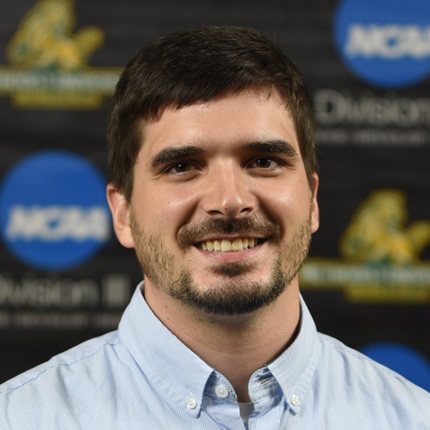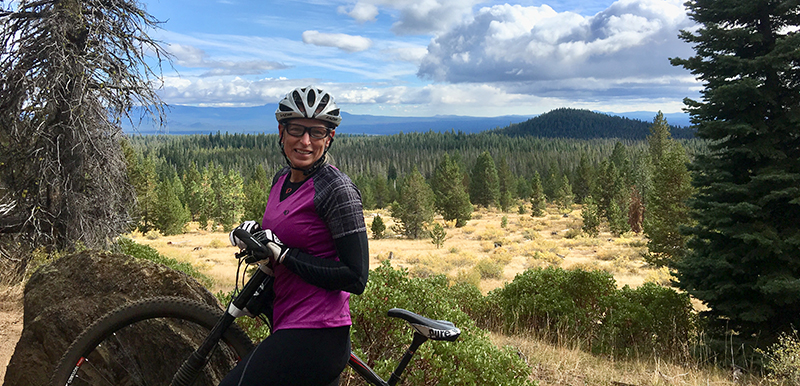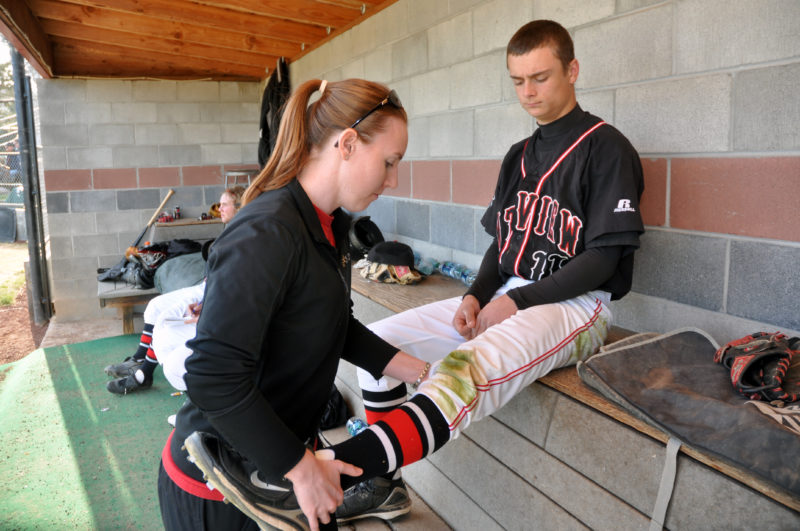What is the Sports Medicine Program?
With the recent media focus on concussion, sudden cardiac and heat-related deaths in school athletics, there is little question that having a qualified health care professional onsite for young athletes is crucial. That’s why we place certified athletic trainers in local high schools through our Sports Medicine Program. Our athletic trainers provide daily on-site medical care at practices and games, triage accidents and injuries, diagnose and manage concussions, and educate athletes and coaches on injury prevention and sports safety. In short, they do a lot! And, they do all of this at no cost to students or their families. Since 2015, our high school Sports Medicine Program has grown from four schools to eight, and our athletic trainers now care for more than 5,000 student athletes annually. All of this thanks to the generous support of The Center physicians and our donors.
Why We are Here

There is nothing more precious to a parent than the safety of their child. However, parents cannot be at every practice or game to keep an eye on their young athlete. In addition, the majority of high schools in the Northwest, Central Oregon included, do not have the budget to hire and staff their own athletic trainers to care for their athletes. With more budget cutbacks each year, public schools focus their funds on maintaining high quality academic programs and ensuring equal access to education – as they should. But, kids need safe physical activity too. As a matter of fact, studies show many benefits, physical, emotional, social and intellectual, for kids participating in organized sports. And, schools know that keeping sports programs alongside academic programs is critical for children’s overall development. We agree. We want kids to play and we want them to be safe.
That’s where we step in with our high school Sports Medicine Program. Started over two decades ago by concerned physicians at The Center, The Center Foundation is the only nonprofit program in Central Oregon solely dedicated to ensuring that youth are safe, healthy, and protected while participating in sports. In short, we fill the gap by providing the athletic trainers that our schools cannot afford.
How Can YOU Help?
 In order to accomplish this, we raise over $500,000 annually to provide sports medicine services to eight high schools in Bend, La Pine, Sisters, Madras, Culver and Crook County. However, we have more work to do. Specifically, our middle school athletes need support, and we have an additional high school coming online in 2021. As our region continues to grow, so does our opportunity to keep kids active and safe. This is where YOU come in. Our kids depend on us; we depend on you to keep us here protecting them. If every parent of a high school athlete in Central Oregon gave just $10 a month for one year (that’s only two visits to Starbucks!) it would go a log way toward reaching our goals.
In order to accomplish this, we raise over $500,000 annually to provide sports medicine services to eight high schools in Bend, La Pine, Sisters, Madras, Culver and Crook County. However, we have more work to do. Specifically, our middle school athletes need support, and we have an additional high school coming online in 2021. As our region continues to grow, so does our opportunity to keep kids active and safe. This is where YOU come in. Our kids depend on us; we depend on you to keep us here protecting them. If every parent of a high school athlete in Central Oregon gave just $10 a month for one year (that’s only two visits to Starbucks!) it would go a log way toward reaching our goals.
New this year, we are excited to announce that the Maybelle Clark McDonald Fund has awarded us a matching grant for gifts up to $5,000. Please consider making a gift to The Center Foundation Sports Medicine Program. Donating is easy on our website, and we are truly grateful for every dollar given. Make your gift go further by donating today!
Written by: Shawn Taylor, Program Administrator for The Center Foundation. Learn more about Shawn HERE.
[clear][divider]
References:
The Value of the Secondary School Athletic Trainer. National Federation of State High School Associations. Published online March 10, 2015. Accessed October 26, 2018. https://www.nfhs.org/articles/the-value-of-the-secondary-school-athletic-trainer/
Youth sport: positive and negative impact on young athletes. Journal of Sports Medicine. Published online May 31, 2013. Accessed October 26, 2018. https://www.ncbi.nlm.nih.gov/pmc/articles/PMC3871410/
Sports and Child Development. Published online May 4, 2016. Accessed October 26, 2018. https://journals.plos.org/plosone/article?id=10.1371/journal.pone.0151729
The Value of Athletic Training Employment in Secondary School Athletics. The Sport Journal. Published Online August 31, 2017. Accessed October 26, 2018. https://thesportjournal.org/article/the-value-of-athletic-training-employment-in-secondary-school-athletics/


 Tis the season of coughing, sneezing, and runny noses – not just roasted chestnuts over an open fire and sleigh rides in the snow. The scourge of cold and flu season is here. The U.S. Centers for Disease Control and prevention (CDC) estimates that there are over 425 million cases of the cold and flu every year. In an active community such as ours, the question often comes up as to whether you should exercise or rest while sick. Can you “burn it out” with a good run, or do you just need some serious downtime? The answer is…it depends.
Tis the season of coughing, sneezing, and runny noses – not just roasted chestnuts over an open fire and sleigh rides in the snow. The scourge of cold and flu season is here. The U.S. Centers for Disease Control and prevention (CDC) estimates that there are over 425 million cases of the cold and flu every year. In an active community such as ours, the question often comes up as to whether you should exercise or rest while sick. Can you “burn it out” with a good run, or do you just need some serious downtime? The answer is…it depends. We are excited to announce our
We are excited to announce our  Understanding Concussions
Understanding Concussions helmet itself cannot prevent a concussion, research shows that improper fit of the helmet can increase concussion symptom severity and duration. Next, proper tackling technique can help to reduce the risk of concussion by using the shoulder to initiate contact instead of using the head. Finally, neck strengthening can also be beneficial to help stabilize the head and dissipate the forces transferred to the head during collisions and rapid head rotations.
helmet itself cannot prevent a concussion, research shows that improper fit of the helmet can increase concussion symptom severity and duration. Next, proper tackling technique can help to reduce the risk of concussion by using the shoulder to initiate contact instead of using the head. Finally, neck strengthening can also be beneficial to help stabilize the head and dissipate the forces transferred to the head during collisions and rapid head rotations. A native of Lewiston, Maine, Nicole attended Dakota Wesleyan University for her undergraduate degree, earning a Bachelor of Science in Athletic Training. After graduating, Nicole went on to South Dakota State University where she earned her Master of Science in Exercise Science. While at South Dakota State Nicole enjoyed her time as a Graduate Assistant Athletic Trainer for the Men’s and Women’s Track and Field and Cross Country Teams.
A native of Lewiston, Maine, Nicole attended Dakota Wesleyan University for her undergraduate degree, earning a Bachelor of Science in Athletic Training. After graduating, Nicole went on to South Dakota State University where she earned her Master of Science in Exercise Science. While at South Dakota State Nicole enjoyed her time as a Graduate Assistant Athletic Trainer for the Men’s and Women’s Track and Field and Cross Country Teams.







 Foam rolling consists of three phases. For example, for the quadriceps (quad) muscle, the athlete is lying face-down with the foam roller under the quads. Here are the steps to follow in order to effectively use a foam roller on sore muscles:
Foam rolling consists of three phases. For example, for the quadriceps (quad) muscle, the athlete is lying face-down with the foam roller under the quads. Here are the steps to follow in order to effectively use a foam roller on sore muscles:
 Next, the athlete must have written clearance (per Oregon State Law HB 348) from a health care professional, releasing them to full practice and competition. Until these steps take place, the student is not cleared for practice or competition.
Next, the athlete must have written clearance (per Oregon State Law HB 348) from a health care professional, releasing them to full practice and competition. Until these steps take place, the student is not cleared for practice or competition.